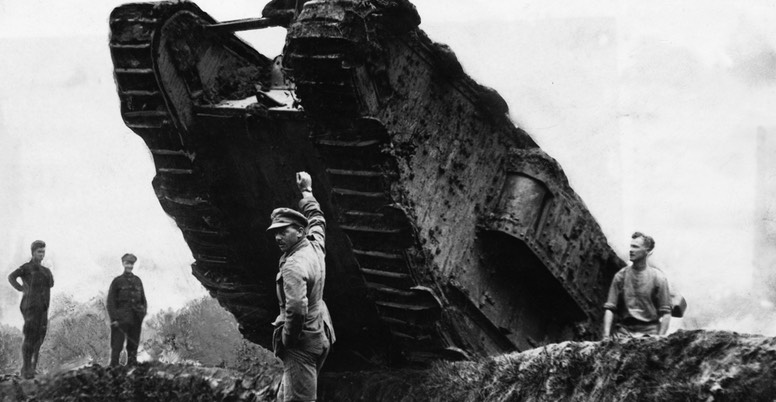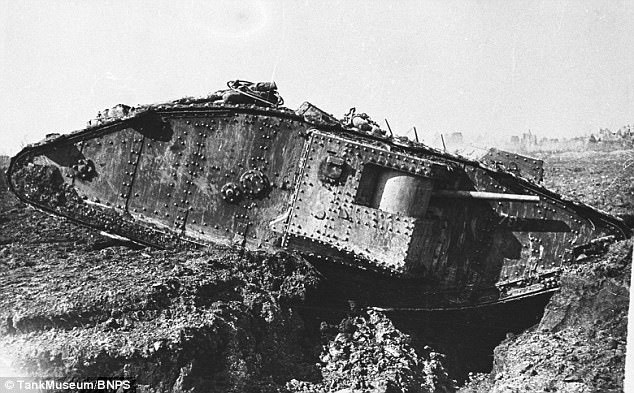
Great War tanks were not sleek, mobile fighting machines. Originally conceived as a land warship, tanks were first developed and commissioned by the British Royal Navy; its name referring to its resemblance with a water container, or tank.
Early designs consisted of armour reinforced bodies equipped with two machine guns, powered by tractor-inspired engines, and driven by two caterpillar tracks. The first tanks only had a range of twenty miles and a theoretical top speed of four miles per hour, although most tanks did not exceed two miles per hour. These limitations kept tanks from offering much utility in a fast-moving assault. Designed for trench warfare, the first models had the ability to span and breech entrenched positions. The environment for crews inside was inhospitable; engines often heated a tank’s interior to unbearable temperatures and exhaust leaks left soldiers exposed to noxious fumes.

This new piece of machinery represented a step forward in military technology and required new battle tactics. As the war waged on, tanks eventually began to prove their worth for the Allies, carrying the day in battles such as Cambria and St. Mihiel. By 1917, France used its own tank corps and the United States quickly followed suit, using French-manufactured Renault tanks. The Germans, however, were much slower to adopt this new technology, not successfully deploying tanks on the battlefield until 1918.
At the end of the Great War, the Allies produced over 6,500 tanks, while the Germans had only invested in 20. Though they were a novel military trial at the beginning of the Great War, by 1918, tanks, and effective battle tactics to utilize them, changed military strategy; providing essential support for infantry advances, which is still utilized to this day.
By Micheal Williams
For further reading/Sources:
Beach, Jim. "British Intelligence and German Tanks, 1916-1918." War In History 14, no. 4. 2007: 454-475
Castaldi, Carolina, Roberto Fontana, and Alessandro Nuvolari. "‘Chariots of fire’: the evolution of tank technology, 1915–1945." Journal Of Evolutionary Economics 19, no. 4: 545.
"Armor and Transport." History Of World War I 3, 848-867. 2002
Goldstein, Jack. 101 Amazing Facts About The First World War. Luton: Andrews UK, 2014
http://www.firstworldwar.com/weaponry/tanks.htm
Kaplan, Philip. Rolling Thunder : A Century of Tank Warfare. Barnsley, South Yorkshire: Casemate Publishers and Book Distributors, LLC, 2013.
Bradford, George. 1914-1938 Armored Fighting Vehicles. Mechanicsburg, PA: Stackpole Books, 2010